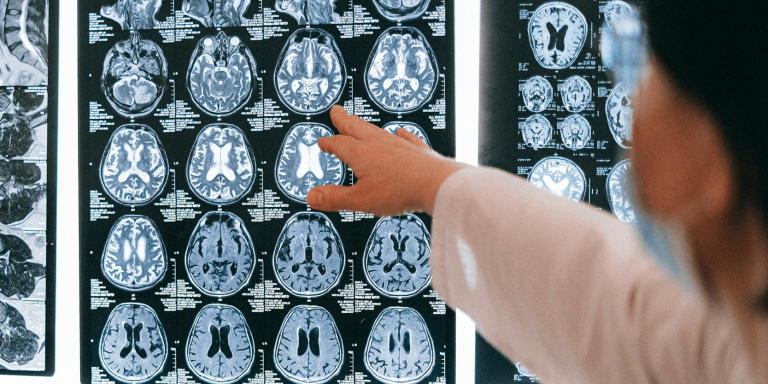
Huntington’s disease is a rare genetic and hereditary disease that leads to a progressive degeneration of nerve cells in the brain, resulting in severe psychiatric and motor disorders. A research team (Sorbonne University/Inserm/CNRS) led by Christian Néri, Inserm Research Director at IBPS, has demonstrated that the loss of cellular compensation and neuronal resistance would be the main driver of this disease at the molecular level. This work, suggesting that restoring neuronal resilience is an important therapeutic avenue to fight this disease, was presented in the study “deformation analysis reveals the temporal dynamics of cell-type-specific homeostatic and pathogenic responses to mutant huntingtin” published in e-life.
Christian Néri is Director of Research at INSERM, UMR 8256 – Adaptation Biologique et Vieillissement, where he leads the team “Compensation systems in neurodegenerative diseases and aging (BrainC)”. His main objective is to understand how the ability of neurons to maintain their function and resist neurodegenerative diseases is regulated at the molecular, cellular and inter-cellular level, and what impact this has on the evolution of these diseases. She studies Huntington’s disease, which has led to many advances in neurodegenerative diseases, as well as Alzheimer’s disease.
Christian Néri’s team has joined forces with Myriam Heiman’s laboratory at MIT, which has obtained genomic data in the USA in models of the disease, and the Jacques-Louis Lions Laboratory (Sorbonne University/CNRS) for this work.
The study: “Shape deformation analysis reveals the temporal dynamics of cell type-specific homeostatic and pathogenic responses to mutant huntingtin.
Our body’s cells are naturally able to resist disease through cellular homeostasis, compensatory mechanisms that repair cellular damage.
Clinical studies of the progression of neurodegenerative diseases, including Parkinson’s disease and Huntington’s disease (HD), have shown that progression to later stages of the disease is often associated with a loss of compensatory processes that allow neural circuits to maintain robust function, even in the presence of some level of cellular dysfunction or loss.
However, the molecular mechanisms underlying this loss of cellular homeostasis remain poorly understood at the systems level in each case.
The researchers hypothesized that the development of a new computational approach that uses a deep analysis of the shapes (e.g., surfaces, curves) characterizing genomic data would provide an accurate basis for mapping the dynamic and functional characteristics of molecular responses at the systems level. For this purpose, they developed Geomic, an approach based on the shape deformation formalism.
They integrated dimensional RNA-seq and in vivo neuronal survival data to map the temporal dynamics of homeostatic and pathogenic responses in four striatal cell types of mouse models of Huntington’s disease (HD).
Results of the study
The resulting map shows that most pathogenic responses are attenuated over time and most homeostatic responses decrease. These results suggest that neuronal death in Huntington’s disease is mainly due to the loss of homeostatic molecular responses and not to the enhancement of pathogenic molecular responses, underlining the importance of homeostatic processes in disease progression. They provide a roadmap for selecting therapeutic targets to restore neuronal resilience, and pave the way for applications of Geomic to “omics” data analysis in several other diseases, including other neurodegenerative diseases.
Article sources:
“Shape deformation analysis reveals the temporal dynamics of cell-type-specific
homeostatic and pathogenic responses to mutant huntingtin”.
Elife, DOI: 10.7554/eLife.64984
Authors:
Lucile Megret,1 Barbara Gris,2 Satish Sasidharan Nair,1 Jasmin Cevost,1 Mary Wertz,3 Jeff Aaronson,4 Jim Rosinski,4 Thomas F Vogt,4 Hilary Wilkinson,4 Myriam Heiman,3, and Christian Neri, 1
Affiliations:
1. Sorbonne University, Centre National de la Recherche Scientifique UMR 8256, INSERM ERL U1164, Paris, France;
2. Sorbonne University, Centre National de la Recherche Scientifique, Laboratoire Jacques-Louis Lyons (LJLL), Paris, France;
3. MIT, Broad Institute, MIT, Picower Institute for Learning and Memory, Cambridge, United States;
4. CHDI Foundation, Princeton, United States.
Translated from IA et génomique : la perte de l’homéostasie neuronale joue un rôle central dans la maladie de Huntington









